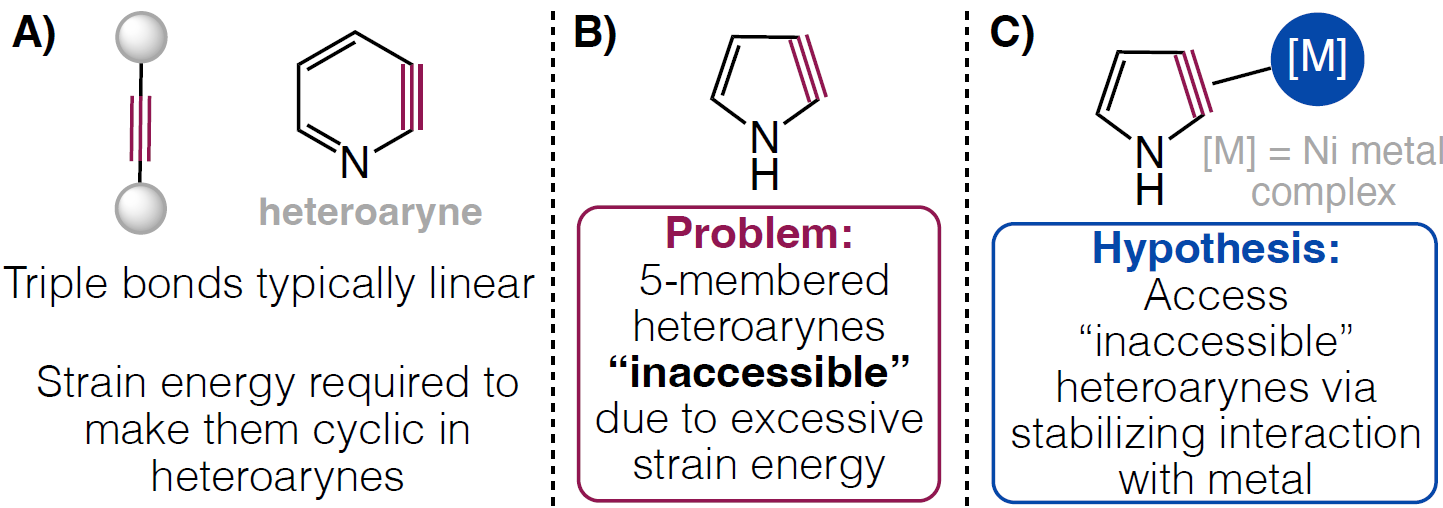Novel metal-bound heteroarynes for small molecule synthesis
A novel method for the streamlined synthesis of pharmaceutically relevant small molecules via 5-membered metal-bound heteroarynes.

Applications
- Pharmaceuticals
- Agrochemicals
Key Benefits & Differentiators
- Streamlined synthesis: Pharmaceuticals and agrochemicals can be undergo late-stage difunctionalization in one-pot
- Formation of new intermediates: Transition metal catalysts allow the formation of previously inaccessible heteroarynes
Technology Overview
Cyclic compounds containing oxygen and nitrogen are essential building blocks for a host of chemical compounds found in nature. Due to their widespread presence throughout biochemical pathways, they are also of extreme interest for applications in many important pharmaceuticals and agrochemicals. The decoration of these heterocycles with different functional groups is critical to alter their chemical properties such that they can be tuned for a particular end use. However, functionalizing these compounds can be difficult and require multiple synthetic reactions. Although methods exist for the functionalization of these heterocyclic compounds, this has largely been limited to reactions that add one substituent at a time. To address this, aryne intermediates have been investigated and shown to offer a solution to enact one-pot difunctionalization. However, this methodology has previously not been applicable to 5-membered heteroarynes containing nitrogen and oxygen which is a common motif found in drug molecules.
Researchers at the University of Minnesota have developed a novel method for the synthesis of pharmaceutically relevant small molecules via a transition metal-bound heteroaryne intermediate. By using transitional metal catalysts, 5-membered heteroaryne intermediates previously thought to be inaccessible have been synthesized and used to illustrate the proof of concept in performing one pot difunctionalization reactions of 5-membered heterocycles. This technology unlocks the utility of 5-membered nitrogen-containing heterocycles to perform late stage functionalization and derivatization that can help streamline drug discovery.
Phase of Development
TRL: 3-4Lab scale proof of concept.
Desired Partnerships
This technology is now available for:- License
- Sponsored research
- Co-development
Please contact our office to share your business’ needs and learn more.
Researchers
- Courtney Roberts, PhD Assistant Professor, Department of Chemistry
-
expand_more library_books References (1)
- Humke J, Belli R, Plasek E, Kargbo S, Ansel A, Roberts C. (2024), Nickel binding enables isolation and reactivity of previously inaccessible 7-aza-2,3-indolynes, Science, 384, 408-414
-
expand_more cloud_download Supporting documents (1)Product brochureNovel metal-bound heteroarynes for small molecule synthesis.pdf